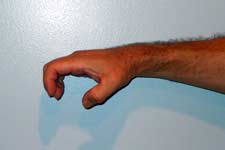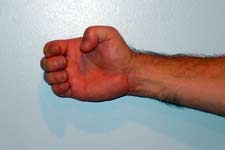I Am A Maximizer: I can not run an errand without trying to figure out how many additional errands I can run along the way and back. If I have 10 minutes before I have to leave, I have to do nine-minutes worth of tasks to fill the time. And, apparently, I can't drive all the way to Ashkelon to teach self-defense for two hours and not agree to teach another two-hour class while I'm there... even though I am already scheduled to teach two more classes--- one hour each, later in the day.
Faced with an opportunity for a quick and easy fix of efficiency, I forget about the driving, the preparation for each class and everything else. I forget that I need and deserve time to stop, to reflect, to meet my own needs. My practice time is almost always one of the first "needs" to fall by the wayside.
I lost my next best chance to work out to my difficulty in saying "no". Someone begged me for a favor. I was good; I said no. Then she begged and pleaded. So I gave up an entire Thursday preparing a lecture, driving 2.5 hours to the Dead Sea, giving a one hour lecture/class to 12 terrific women (not "80" as previously predicted) and driving home- a mere 1 hour and 45 minutes this time.
Fortunately, sometimes my personality quirks work in my favor.
Last Thursday, for instance, after I finished working out alone, one of my students called and asked if she could come by to work out with me. I was tempted to say no. I was tired. It was cold and rainy... But how could I say "no" to a student who wanted to work out? So I worked out a second time that day.
Then, last night, several of my students were free for a workout so, being a true Maximizer, I finally got around to sweeping and washing the dojo aka porch floor and started working on hanging mirrors and other maintenance tasks I had failed to address during the week. And then we worked out for an hour and a half. Targeting, shield work and takedowns. All the things that I never get to do when I work out alone.
All of this reminds me of this past summer when I went to George's house to hang out and work out. One of the MANY corrections he made was to watch out for winding up. That tendency to pull your shoulder a little further back, push the elbow behind the body, wind the arm around behind your neck or throw the upper body into your kick. All that, just to get "the feeling of more power". I say "the feeling of more power" because there are much more efficient ways to produce power--- arches, compression and torque to name a few--- that don't put you at risk by slowing you down or dropping your guard.
That "little extra pull back" may seem efficient, but, in the end, falling into that habit robs you of the opportunity to explore much greater sources of power.
So I really need to get those mirrors up on the wall so, when I work out alone, I can catch myself when I wind up. And apparently, I need to hang a mirror in my mind so I can see myself when I begin to relapse into my habits of over-scheduling, under-valuing my worth, my time or my peace of mind.








